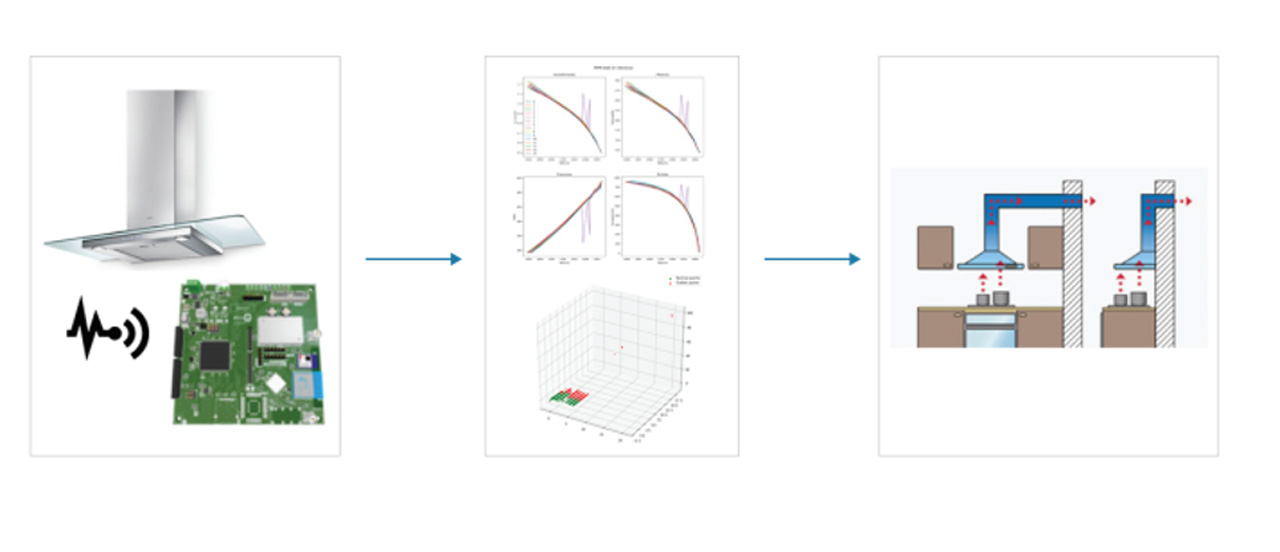
Use case Elica
Adaptive Installation
The use case foresees the identification of sensors and parameters to monitor the operation of the product (kitchen hoods by Elica) in the user in order to assess the correctness of installation, use and routine maintenance.
Moreover, the approach can provide suggestions to the user or automatically modify the product variables that can be controlled remotely.
The results of the research activity make it possible to achieve new levels of service in terms of traceability and monitoring even in the post-realization phases of the production process and make it possible to open up new
functionalities. The themes that have the main relationship with this use case are: AI and big data in the perspective of anomaly detection.
Integrations with respect to the objectives of the use case: the demonstrator was selected consisting of a hood properly sensorized so that it is possible to evaluate the type of installation and, possibly,
modify the performance of the product. Various types of sensors with different sizes have been analyzed in order to understand which ones could be the most suitable for the purposes of the project. In particular, a tachometric sensor to evaluate the rotation speed of the impeller, an accelerometric sensor to identify variations in vibration and a current sensor capable of reading variations in motor absorption were considered.
Development of the use case: laboratory tests were carried out to produce synthetic data relating to different modes of installation (load variation) and operating anomalies in order to assess44
the operating parameters of the integrated system. The synthetic data were integrated with field data related to an existing sensor device from Elica so that information about device current mode, fan current speed, air quality index, error messages, device connection status and individual sensor values could be considered at the same time. This data was the basis of reasoning for the definition and implementation of data models and data analysis systems for IIoT monitoring systems.
Valorisation of the results: the integrated technologies and the functionalities obtained have allowed to evaluate in a practical way the results of the integration with which it has been possible to define a new model of analysis of the behaviour of the hoods produced by Elica thanks to the IoT technologies and artificial intelligence algorithms developed in the project.
